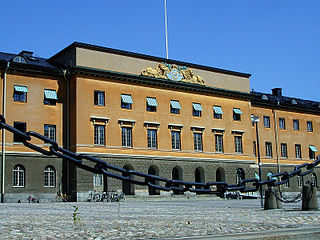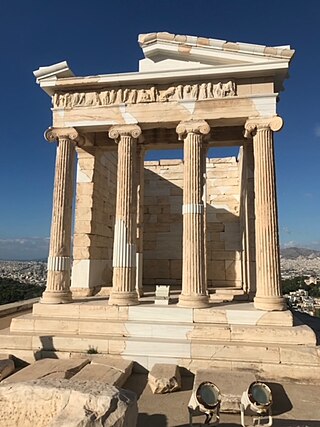Related Research Articles
In the broadest sense, cultural resource management (CRM) is the vocation and practice of managing heritage assets, and other cultural resources such as contemporary art. It incorporates Cultural Heritage Management which is concerned with traditional and historic culture. It also delves into the material culture of archaeology. Cultural resource management encompasses current culture, including progressive and innovative culture, such as urban culture, rather than simply preserving and presenting traditional forms of culture.

The Archaeological Survey of India (ASI) is an Indian government agency that is responsible for archaeological research and the conservation and preservation of cultural historical monuments in the country. It was founded in 1861 by Alexander Cunningham who also became its first Director-General.

Cultural heritage is the heritage of tangible and intangible heritage assets of a group or society that is inherited from past generations. Not all heritages of past generations are "heritage"; rather, heritage is a product of selection by society.

The Indian National Trust for Art and Cultural Heritage (INTACH) is a non-profit charitable organisation registered under the Societies Registration Act, 1860.

The Swedish National Heritage Board is a Swedish government agency responsible for World Heritage Sites and other national heritage monuments and historical environments. It is governed by the Ministry of Culture.
Historic England is an executive non-departmental public body of the British Government sponsored by the Department for Culture, Media and Sport. It is tasked with protecting the historic environment of England by preserving and listing historic buildings, scheduling ancient monuments, registering historic parks and gardens and by advising central and local government.

Archaeology or archeology is the study of human activity through the recovery and analysis of material culture. The archaeological record consists of artifacts, architecture, biofacts or ecofacts, sites, and cultural landscapes. Archaeology can be considered both a social science and a branch of the humanities. It is usually considered an independent academic discipline, but may also be classified as part of anthropology, history or geography.
The Directorate General of Antiquities is a Lebanese government directorate, technical unit of the Ministry of Culture and is responsible for the protection, promotion and excavation activities in all sites of national heritage in Lebanon. Sarkis Khoury is the Director General with other staff including Joumana Nakhle and Laure Salloum.

The conservation and restoration of archaeological sites is the collaborative effort between archaeologists, conservators, and visitors to preserve an archaeological site, and if deemed appropriate, to restore it to its previous state. Considerations about aesthetic, historic, scientific, religious, symbolic, educational, economic, and ecological values all need to be assessed prior to deciding the methods of conservation or needs for restoration. The process of archaeology is essentially destructive, as excavation permanently changes the nature and context of the site and the associated information. Therefore, archaeologists and conservators have an ethical responsibility to care for and conserve the sites they put at risk.
Sahapedia is a website which seeks to make the culture and history of India accessible to all. Sahapedia is a portmanteau of the word Saha and encyclopedia. Saha is Sanskrit for "together with". It uses a method of collaboration between scholars and lay people contributing content to the portal. Once lay people register they are able to contribute to the portal once approved by editors. The site seeks to take the middle path between scholarly contribution and the open contribution system seen on Wikipedia. It serves as a portal with content in the form of articles, videos, image galleries, interviews and events listing.
National Digital Repository for Museums of India is a C-DAC-led project to create a seamless access to collections and artifacts organized according to themes, regardless of the physical and geographical locations of the museums that house them. The first public version developed on Dspace was released in 2002. The initial draft of Open Archival Information System (OAIS) was also released in year 2003. It is necessary to transform museums for greater relevance and application for the modern society. Therefore, while focusing the needs of Indian museums, Dr. Dinesh Katre, Senior Director at C-DAC initiated the development of e-curator software named as JATAN (जतन): Virtual Museum Builder in 2001, which was developed and released in 2004. Subsequently, JATAN (जतन) software was deployed in Chhatrapati Shivaji Maharaj Museum, Mumbai; Raja Dinkar Kelkar Museum, Pune and The Baroda Museum & Picture Gallery in Vadodara. Although the response from museums was lukewarm, C-DAC continued developing JATAN (जतन) software into a comprehensive digital collection management system for museums. As part of this research, early visions of using crowdsourcing method for metadata enrichment of museum artefacts and unified virtual catalogue for Indian museums was presented in 2005.
References
- 1 2 "National Mission on Monuments and Antiquities". INDIAN CULTURE.
- ↑ "NMMA". nmma.nic.in.
- ↑ "Over 14 lakh antiquities documented: Culture Ministry". The Economic Times. PTI. 21 June 2016. Retrieved 21 June 2021.
- ↑ Kumar, R. Krishna (25 January 2020). "Budgetary support sought to map unprotected monuments in State" – via www.thehindu.com.
- 1 2 Market, Capital (21 June 2016). "14,00,740 Antiquities Documented & Data of 3.15 Lakhs of BH&S and Antiquities Uploaded on NMMA Website" – via Business Standard.
- ↑ "What is National Mission on Monuments and Antiquities?". Jagranjosh.com. 12 March 2019.
- ↑ "NMMA". nmma.nic.in.